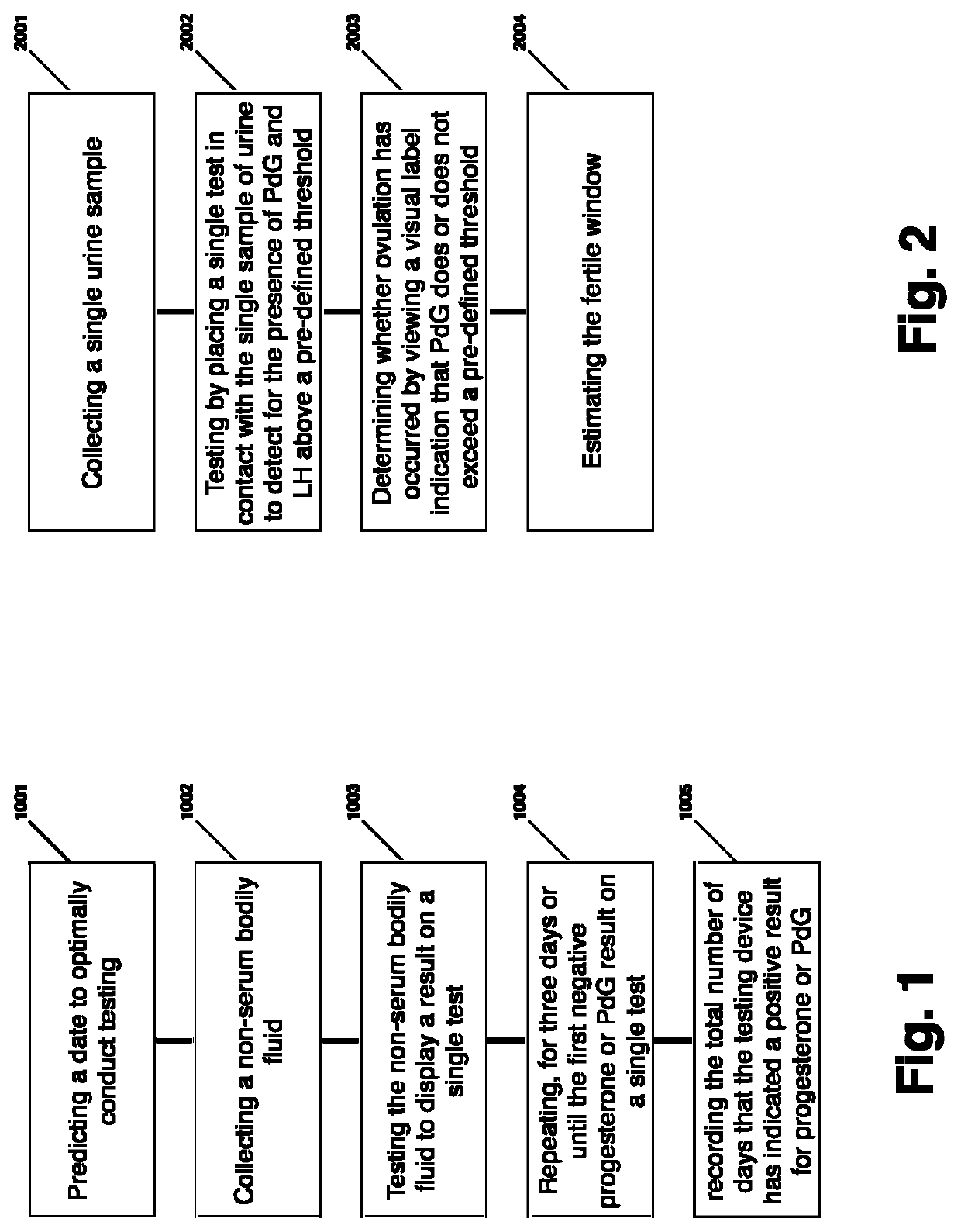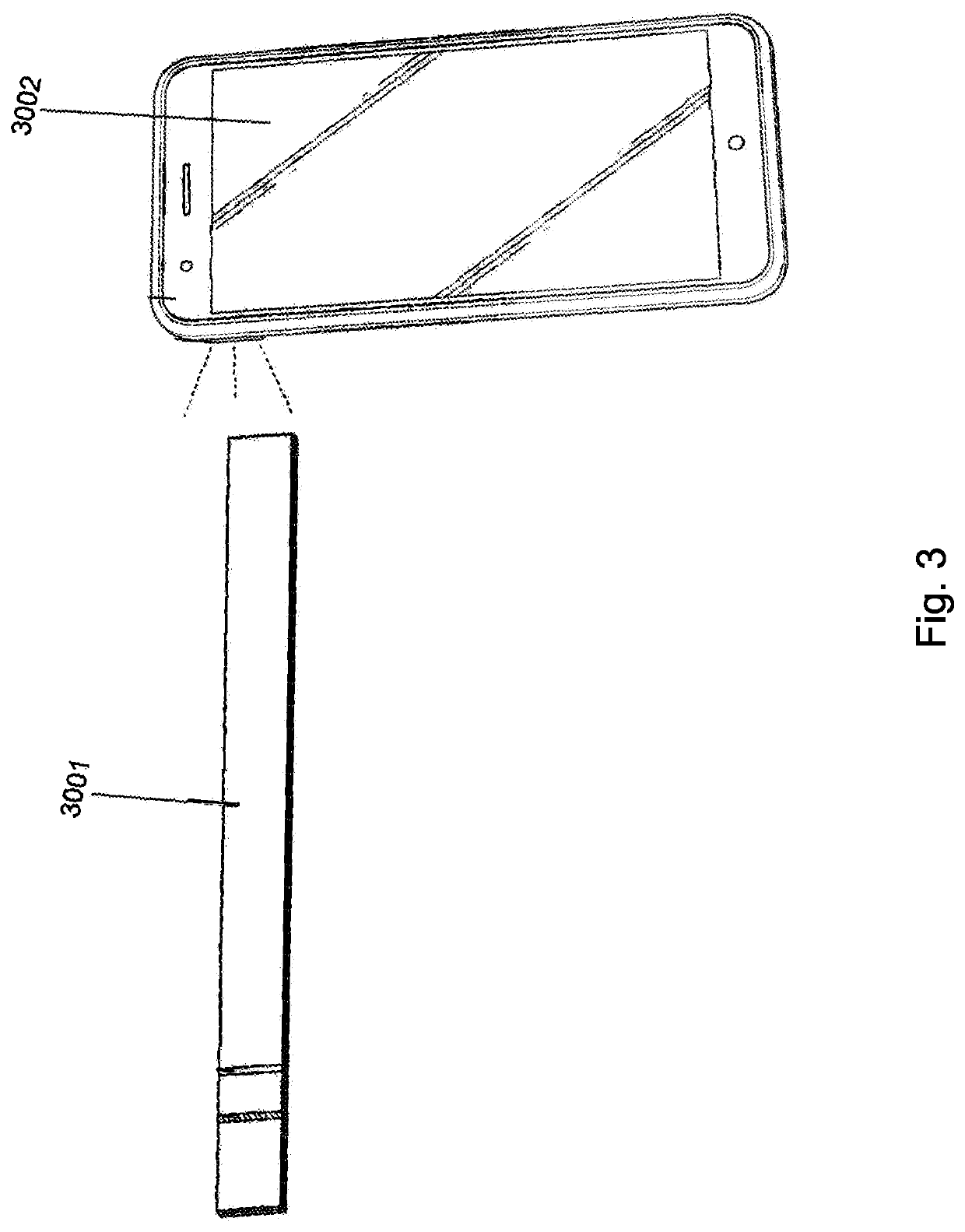Method for evaluating urine of a subject to estimate the fertile window by evaluating for the presence of analytes of estrogen and progesterone
a technology of progesterone and urine, applied in the field of urine based lateral flow assays, can solve the problems of preventing accurate tracking, affecting the accuracy of progesterone testing, and not being practicable to allow a woman
- Summary
- Abstract
- Description
- Claims
- Application Information
AI Technical Summary
Benefits of technology
Problems solved by technology
Method used
Image
Examples
example 1
results in readings of PdG below a pre-defined threshold and LH below a pre-defined threshold; test two results in PdG above a pre-defined threshold and LH above a pre-defined threshold ; test three results in PdG above a pre-defined threshold and LH below a pre-defined threshold. This Example 1 signifies that following an LH surge indicating the follicle maturation, that progesterone released indicating ovulation. Such a result demonstrates proper corpus luteum functioning.
example 2
results in readings of PdG below a pre-defined threshold and LH below a pre-defined threshold; test two results in readings of PdG below a pre-defined threshold and LH a pre-defined threshold; test three results in readings of PdG a pre-defined threshold and LH above a pre-defined threshold. This Example 2 signifies that following a sustained LH surge indicating follicle maturation, that progesterone released indicating ovulation. Such a result demonstrates proper corpus luteum functioning.
Example 3—test one results in PdG below a pre-defined threshold and LH below a pre-defined threshold; test two results in PdG above a pre-defined threshold and LH below a pre-defined threshold. This Example 3 signifies that either the LH surge was missed by the test results or that urine was too diluted to detect the LH surge, but regardless that progesterone was released indicating ovulation. Such a result demonstrates proper corpus luteum functioning. Such result also highlights the importance o...
example 4
results in readings of PdG below a pre-defined threshold and LH below a pre-defined threshold; test two results in readings of PdG below a pre-defined threshold and LH above a pre-defined threshold; test three results in readings of PdG below a pre-defined threshold and LH below a pre-defined threshold. Such a result indicates the possibility of improper corpus luteum functioning. As no progesterone (or its analyte, PdG) was detected during this exemplary series, it is possible that the relevant corpus luteum is not functioning properly to support implantation.
[0051]In embodiments of the invention, the tests utilized (optionally a “single test” which as used herein comprises one or more test strips 3001 that are disposable and altogether intended to be utilized one time to evaluate a single non-serum bodily fluid sample) incorporate a pre-defined threshold of PdG correlating in a positive result to at least the lowest amount of progesterone present and necessary to support conceptio...
PUM
| Property | Measurement | Unit |
|---|---|---|
| concentration | aaaaa | aaaaa |
| concentrations | aaaaa | aaaaa |
| concentration | aaaaa | aaaaa |
Abstract
Description
Claims
Application Information
 Login to View More
Login to View More - R&D
- Intellectual Property
- Life Sciences
- Materials
- Tech Scout
- Unparalleled Data Quality
- Higher Quality Content
- 60% Fewer Hallucinations
Browse by: Latest US Patents, China's latest patents, Technical Efficacy Thesaurus, Application Domain, Technology Topic, Popular Technical Reports.
© 2025 PatSnap. All rights reserved.Legal|Privacy policy|Modern Slavery Act Transparency Statement|Sitemap|About US| Contact US: help@patsnap.com



